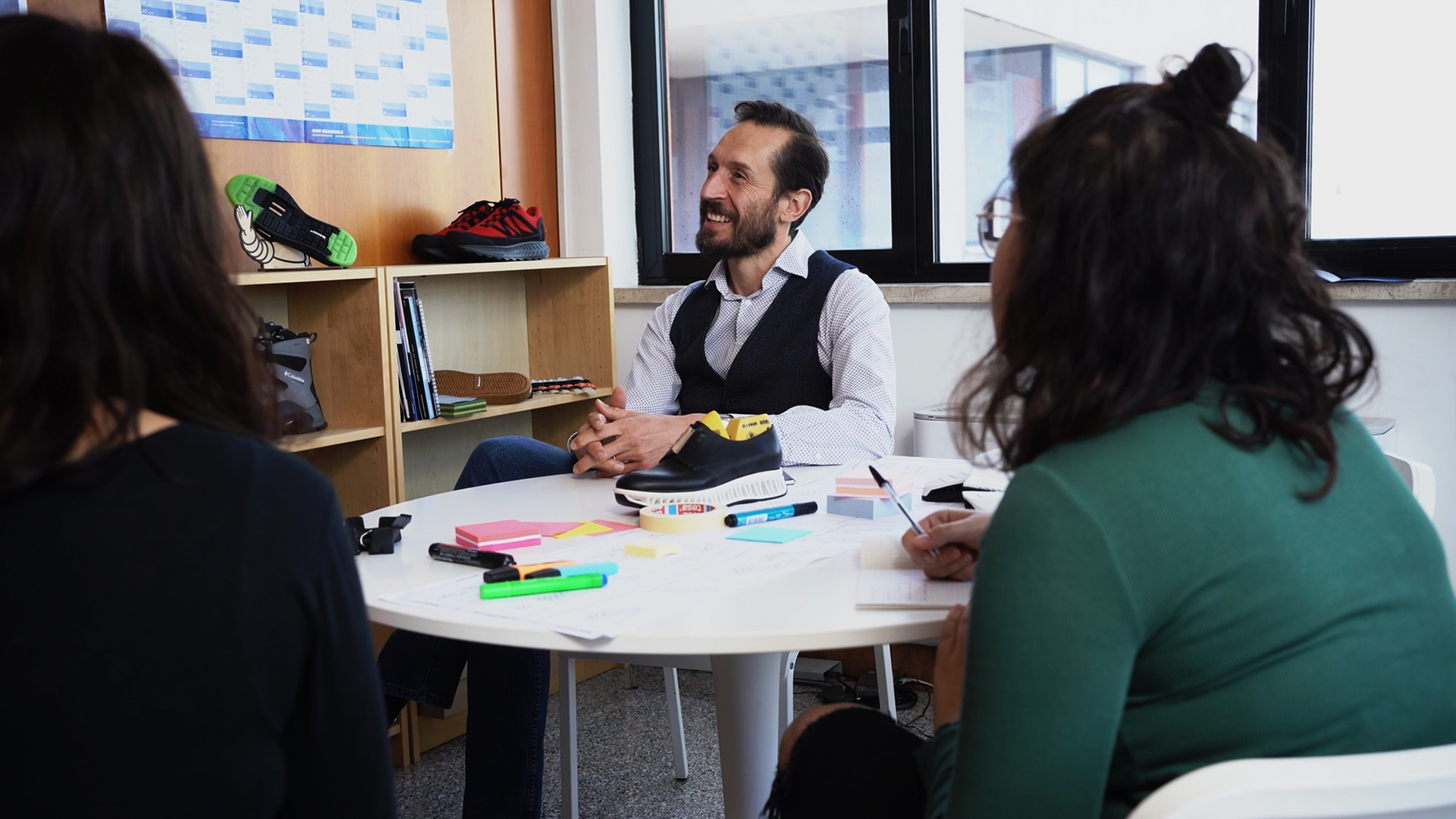The custom shoe trend is becoming increasingly popular worldwide.
It is the trait d’union of aspects such as technology, craftsmanship, design, creativity and, above all, customisation (a must-have for footwear lovers). Tidhar Zagagi with his ‘Pixel Shoe’ project is an extraordinary example of this phenomenon.
Tidhar Zagagi
Tidhar Zagagi is a talented Israeli, studied at the Bezael Academy of Arts and Design specialising in footwear and as a product designer.
The artist known for his unique and distinctive style in the world of footwear describes himself as

constantly busy translating ideas into new, innovative and surprising experiences
Tidhar Zagagi
The story is really curious!
The Israeli designer usually stands in the street with a wooden cart, his ‘one-man shoe factory’. Interested passers-by sit on the cart and can place their foot on a last to get a detailed profile of the foot, defining the shape of the sole. In just a few minutes, then, Tidhar is able to make custom-made shoes (turning the mould of the foot into a PU foam), then using a combination of traditional materials and advanced printing techniques.

Each shoe is shaped according to the person’s foot and is also ‘merged’ with the sock to create a highly innovative and customised product. The result is amazing: each shoe is unique and literallybears the footprint not only of its creator but also of the person wearing it.
Tidhar is not ‘just’ a craftsman. His works shed new light on the whole footwear sector, namely on how shoes are conceived, co-produced, customised and distributed.
Customisation: the client as an active part of the creative process
First of all, Tidhar places the ‘consumer’ (or rather, the ‘person’) at the heart of the creative and production flow, so that the product is a reflection of his morphological, aesthetic and emotional characteristics.
The customer is an active part of the ‘shoe game’, both in the product modelling phase (carried out in some cases through a 3D body scan) and in the decision-making process. In this way, the person wearing the shoe will have contributed implicitly and explicitly to the final product and the shoe will actually be ‘his or her own’.
The last fundamental aspect is the extreme customisation of the shoe’s functionality itself: the benefits of the shoe are ‘designed on’ the customer for impeccable comfort.
Customisation: a new economic and production scenario
Actually, art and imagination have always played a decisive role in anticipating unusual and apparently faraway scenarios.
This is the case with Pixel Shoe, whose art has the enormous plus of proposing an alternative model to the current one, characterised by mass production and distribution.
Tidhar Zagagi’s paradigm is based on the ‘one-to-one’ concept, as opposed to the ‘one-to-all’ (or ‘one-to-many’) model that predominantly marks the modern footwear industry.
However, this alternative is not intended as a ‘replacement’ of one model by another, but rather as a ‘new coexistence’ of the two models.
The Israeli artist not only does not renounce the use of mass products in his creations, but uses precisely the most iconic models in mass culture to blend their components into footwear that takes on new forms and meanings. The brands, however, remain clearly recognisable in the final product.
Therefore, it is not hard to imagine a new production and distribution structure, in which the major brands would continue to innovate and produce footwear and, at the same time, artistic craftsmen such as Tidhar Zagagi might emerge, whose job would be to ‘finalise’ footwear in an original and creative way and in collaboration with the customers themselves.
Intensive ‘personalisation’ of shoes is not the only model
Pixel Shoe project is a variation of that – unstoppable – phenomenon of shoe customisation. His approach, which we could call ‘intensive customisation’, is one of the many existing and successful customisation models.

Many brands, in fact, increasingly offer consumers the possibility of configuring their footwear, within a range of predetermined choices. In this case, the element of ‘limitless’ creativity and ‘extreme customisation’ is missing. However, this ‘brand-driven’ type of customisation represents a good compromise between ‘standardisation’ and ‘customisation’, which is also highly appreciated by consumers.
You may also be interested in the following articles:

Even the soles are sewn, not just the clothes
Footwear assembled by sewing the parts together is stronger, more durable and also more sustainable. Let’s find out how and why soles and shoes are also sewn.

From the mountains to the sea with the Formula compound family
Formula: a technology suitable for different contexts and conditions.

Xero Shoes: onto the barefoot way
Founded in 2009 and headquartered in Broomfield, Colorado, Xero Shoes has evolved into the top barefoot-style shoe brand in the U.S., with customers in over 97 countries. Xero Shoes offers styles in over a dozen footwear categories, including over 30 styles of casual and performance boots, shoes, and sandals so customers can enjoy life-changing comfort […]













































